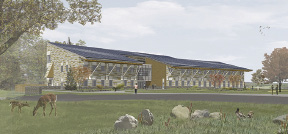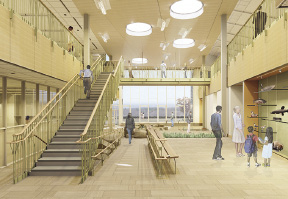The design and construction industry is in the midst of great challenges with the ever present energy crisis, projected population growth and increasing global warming consequences. Statistics repeatedly show that within our built environment, it is in fact buildings that are the key consumers of energy.
According to Architecture 2030 (www.architecture2030.org) and the U.S. Energy Information Administration (EIA), the building sector consumes nearly half (48.7%) of all energy produced in the United States. Just under seventy-six percent (75.7%) of all the electricity produced in the U.S. is used just to operate buildings. Although transportation emissions have been a well -known culprit, in fact, the Building Sector was responsible for nearly half (46.7%) of U.S. CO2 emissions in 2010. In comparison, transportation accounted for 33.4% and industry just 19.9%, making buildings the largest contributor to climate change. Buildings have an extraordinary impact on our energy use, greenhouse gas emissions and economy.
In response to the issue of decreasing the nation's energy consumption, Edward Mazria AIA formed "Architecture 2030" and issued the "2030 Challenge." The aim is for all new U.S. and global facilities to be designed, constructed and occupied as net zero energy buildings. To support this design shift, Architecture 2030 provides website information on Net Zero topics, news, videos, publications and the "2030 Palette," a system that details design parameters for each building element.
In his book "Net Zero Energy Design" (2013) Tom Hootman AIA explains, essentially Net Zero Energy is a measure of a building's energy performance. The goal is to enable a building to produce as much, or more renewable energy as it uses over the course of a year in operation. As Hootman describes, a net zero energy building is a very low-energy building with enough dedicated renewable energy to meet its requirements over the course of a year.
Having standardized definitions and methodologies for measuring net zero energy in a building is key in giving the industry a unified approach to design and construct these buildings, as well as, measuring the results of their actual operation. The National Renewable Energy Laboratory (NREL) has established four ways to define and measure net zero energy for buildings:
* Net Zero Site Building: Produces at least as much renewable energy as it uses over the course of a year when accounted for at the site.
* Net Zero Source Building: Produces or purchases at least as much renewable energy as it uses over the course of a year when accounted for at the energy source.
* Net Zero Emissions Building: Produces or purchases enough emissions-free renewable energy to offset emissions from all energy used in the building over the course of a year.
* Net Zero Cost Building: Receives at least as much financial credit for exported renewable energy as it is charged for energy and energy services by the utility over the course of the year.
We, at Columbia Construction are excited to be identifying more net zero energy building opportunities as NZEB goals are steadily gaining priority and value. We are currently constructing the new Massachusetts Division of Fisheries and Wildlife Field Headquarters in Westborough, Massachusetts for the Division of Capital Asset Management and Maintenance (DCAMM) in collaboration with Architerra and van Zelm Engineers, along with Solar Design Associates, Haley & Aldrich, and Demand Management Institute. This facility is intended to be a "Net Zero Site Building" classification. It will utilize a 300 KW photovoltaic (PV) solar electric system, a closed loop geothermal system, sun shading, variable frequency drives and radiant ceiling panels. It will include an automated energy management system, natural lighting, LED and T8 lighting fixtures with automatic controls and a highly insulated envelope to produce as much renewable energy as it uses annually. Load management, by controlling and minimizing the heating, cooling and lighting loads is a primary step in achieving the net zero energy target utilizing renewable energy systems.
This building type represents the next true transformation in the design and construction of our built environment. Columbia Construction is proud to be part of the community that is rising to meet today's challenge with imperative and effective solutions for the present and future.
Chris McCarthy is a vice president of Columbia Construction Company and manager of the Columbia energy division, North Reading, Mass.











